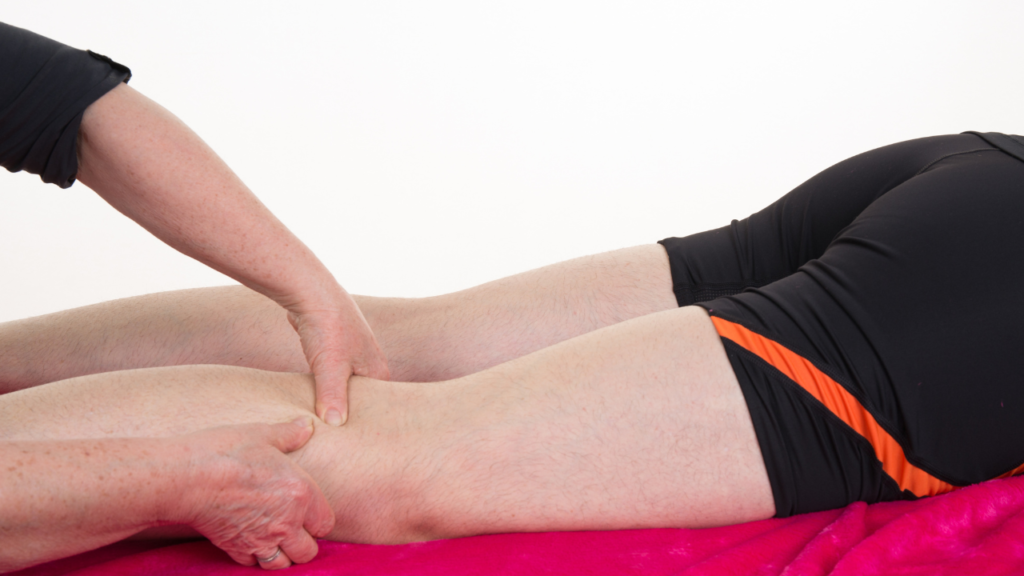Trigger Point is a common term in the field of medicine, and it is attracting increasing attention from both experts and the public. But what is a trigger point? This is often a question asked by those who are new to this concept. In this article, we will learn about it more specifically.
What is Trigger Point?

Trigger points are painful points in your muscles that may be sensitive to touch or pressure. Popular trigger point locations include: neck shoulder neck, backache, Knee hurts, aches and pains, numbness, etc. They can form later when stress, metabolic disorders, trauma, or repeated minor trauma, resulting in strain on muscle fibers. This causes the muscle fiber to become trapped in a contracted state. You can sometimes feel these buttons/points when massaging your muscles.
What types of trigger points are there?
There are two types of trigger points: passive points and active points:
- Passive trigger points cause pain only at a specific location. If you have a bunch of painful muscles in your hamstring and someone presses on it, pain will be felt exactly where the pressure is being placed on that muscle.
- Active trigger points refer to pain sensations spreading to other parts of the body. If someone presses on an active trigger point on your shoulder, you may feel pain in your shoulder along with symptoms on your chest or arm.
Trigger point pain mechanism
When these trigger points form in the muscle, they cause muscle contraction, placing increased pressure on the muscle fibers. Besides, trigger points can also lead to indirect pain - referred pain, you will feel pain in a different location than the place causing the pain (for example, pain related to a heart attack but you only feel pain in your jaw or left arm, but not in your chest).
The effects of trigger points on the body
Trigger points affect the force of motion and range of motion of the muscle. They can damage muscles, shorten and stiffen them, and limit range of motion. For example, your arm and shoulder range of motion will be limited when trigger points appear around the shoulder blades and arms. Moreover, these spots also cause rapid fatigue or muscle recovery time longer than usual.
Symptoms of trigger points
Some other common symptoms of trigger points include:
- Sensation of pain and sensitivity to the touch.
- Numb
- The difference in temperature in the affected area.
- Inability to contract muscles spontaneously.
- Feeling weak in spots.
- Muscle recovery is very slow.
- Multiple spots can cause pain in other areas of the body.
Causes of pain at trigger points

Active Trigger Point arises through overuse of the affected tissue, putting the sports group at high risk for the condition.
Meanwhile, Passive Trigger Points are thought to develop in underutilized tissue, making them more likely to occur in sedentary individuals.
But in general, many factors have been found to increase the likelihood of a sore spot, such as:
- The diet is not good.
- Metabolic disease.
- Overtraining without adequate rest.
- Habits and activities that lead to wrong posture such as sitting cross-legged, bending your head when using the phone, sitting posture vibrating thighs ...
- The aging process.
- People who abuse vigorous exercise to gain muscle, gain muscle and lose fat.
- Status sleep disorders.
How to effectively treat pain points
Use pain relievers
Pharmacological treatment for patients with chronic musculoskeletal pain includes analgesics and medications to help sleep and relax muscles. Antidepressants, antipsychotics, or nonsteroidal anti-inflammatory drugs are commonly prescribed for these patients. (Requires guidance and monitoring by a physician) doctor)
Non-pharmacological treatments
- Acupuncture
- Yoga therapy
- Osteopathic techniques
- Apply heat or cold, heat heating
- Electrotherapy
- Use tools such as medical balls, rollers

- dry needling

Spray and Stretch Technique
This includes stretching and applying a Fluori-Methane or ethyl chloride solution sprayed onto the skin. The sudden drop in skin temperature is thought to provide temporary anesthesia, reducing pain sensation allowing muscles to passively stretch to their normal length, thereby helping to neutralize pain points.
Inject into trigger point
It is also one of the effective options and is mentioned repeatedly as a way to achieve the best results. However, this method is no longer commonly used, as researchers have found that the injection does not affect the pain point but rather the location of the needle.
Trigger Point Compression
Use pressure to compress specific pain points on the body.
Manual release of connective tissue and fascia

Perform the connective tissue and fascia release technique by massaging the areas around the pain point with your hands.
Nguyen hopes that the above sharing will be effective and useful for your situation. Besides, there are also many articles on health and yoga therapy at Nguyen's blog, especially Youtube channel Nguyen has many other useful exercises and movements, please follow and look forward to Nguyen!
References
Trigger Points: Diagnosis and Management



